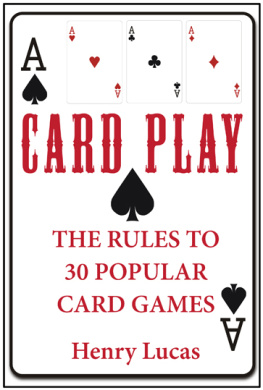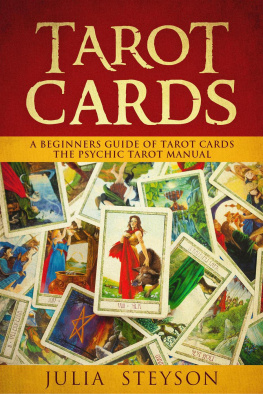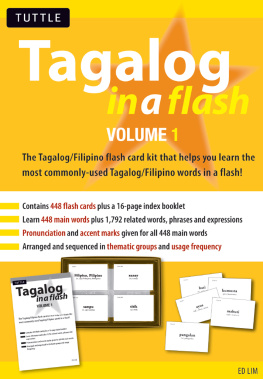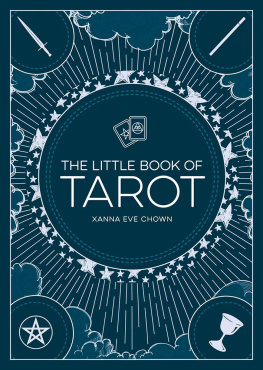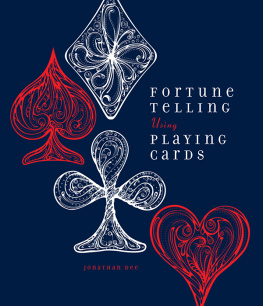About The Author
BOB HAMPTON , of Henderson, NV, is one of the countrys most successful memory teachers. Since 1986, he has taught classes and individuals across the U.S. and helped everyone from school children to business men and women to actors. Bob started learning memory techniques because of poor grades due to attention deficit disorder. After applying memory techniques, his grades soared from a 2.3 in undergraduate studies to a 3.7 in his masters degree at Brigham Young University. In 2005, he developed a plan to put memory techniques to work remembering cards, and went on to become a national bridge champion in 2009.
About The Illustrator
NATALIA BECERRA , of Henderson, Nevada, graduated from the Media Arts & Animation program at The Art Institute. She is constantly looking for new things to learn, creative ideas to share and different ways to express those ideas. Her passion for art has led her to explore the diverse possibilities offered by animation, illustration and sculpting.
One
Get The Picture
I F I WERE TO TELL YOU that West played the ten of clubs, South already played the ace of hearts, North saved her five of diamonds till the end and East still has the three of clubs, you could probably remember that because right now you are really focusing. If I were to tell you that West had a bunch of CATS all over his head and shoulders, that South was wearing a huge HAT that almost touched the other players, that North was playing with a DOLL while playing her hand, and that East had a huge COMB that was bigger than his head stuck in his hair, you wouldnt forget it because the pictures are so vivid.
I first discovered duplicate bridge in 2003 on a world cruise. During my first year of tournaments I experienced some really hard lessons at the table. I kept thinking that there must be a way to become better, faster! The learning curve seemed so slow. Then, during the first half of my second year I realized that some people were making a concerted effort to memorize cards that had been played. There were other players who knew a lot of the cards that had been played but not all of the cards. I was the kind of player that people would love to play against because they would get great scores against me! The typical scenario would be that I would have two cards remaining and not remember which one to play. It was so frustrating!
Having taught memory classes all over Hawaii and California, I decided it was time to put those memory techniques to work! In August of 2005 I started developing my plan. It paid off when I won the Mini-McKenney that year as a sectional master (winning 790 points that year). Although I give most of the credit to the great players who were on my team, I still had to pull my own weight! My hard work paid off in August of 2009 when I won two national titles at the same national tournament in Washington D.C. I was part of the team that won the BAM (Board a Match) and also the Swiss teams. What a thrill!
I realized that there is a definite difference between remembering something (meaning how long can that item be remembered) and NOT FORGETTING something (meaning no matter what, you will not forget this item). This is the magic of Memory, the ability to remember what is IMPORTANT. Every card player has a certain capacity to remember cards. Some players are better at it than others. The top professionals are excellent at remembering every card because they have a gift for remembering the cards. Most of us are not born with that gift and have to develop another way to remember all the cards.
The irony is that when I talk with the very top bridge players like Bobby Levin or Steve Weinstein, they dont think they have a gift. They think everyone should be able to remember every card with practice. Its so easy for them that they just dont understand how hard it is for the rest of us. They will tell me that it takes years and years of playing and then it just happens. My reply is, Oh really, what about players who have been playing decades longer than you and they still cant remember every card like you do? They have no reply.
I wish I had their gift but I dont. However, I do have a gift for learning how to memorize. In fact, I would pit myself against any top bridge player in the world when it comes to memorizing cards. I would put up the challenge for someone to turn over a deck of cards, one card at a time, and then when the deck is done, pick any number from one to fifty-two and I will be able to recall instantly what card it is. I would be able to recall all 52 cards backwards, forwards, starting at a certain number, it doesnt matter. Thats how reliable my memory techniques are. And now Im going to teach them to you!
Two
Do You Remember?
T he question now is, Do you remember the cards that North, South, East and West had? If you do, then youre one step ahead of the game. If you dont, do you remember what North was playing with? Do you remember what South had on her head that was almost touching other players? Do you remember what East had stuck in her hair? Do you remember what West was playing with while playing bridge? If youre like most people, then these pictures were much easier to recall than the cards themselves. Lets get started!
The first thing I need to teach you is that having a picture for a number is much easier than trying to picture a number. That might be a little confusing to some so let me restate that another way. Picturing a man playing with a DOLL is much easier to remember than trying to remember the Five of Diamonds being played from that mans hand. It is easier to have a picture that represents each card rather than trying to just remember numbers and suits. From now on, in fact, that DOLL will always represent the Five of Diamonds. Remember the CATS all over West? The CATS from now on will always represent the Ten of Clubs. What about the huge HAT that South wore? That HAT will always represent the Ace of Hearts. And what about East? Remember what East had in his hair? A huge COMB! From now on a COMB will always represent the Three of Clubs. Let me teach you how these words came to be.
Three
The Phonetic Alphabet
T he phonetic alphabet takes letters from the alphabet and uses these letters to represent each number from 0-9. Only four consonants are not used to represent any number, they are:
Q, W, X, Y
Also, none of the vowels are used to represent any numbers. So, because vowels dont count for anything, we can use them to help make words that we can picture. Heres how it works.
These consonants will always represent these numbers:
0 = S or Z
1 = T or D
2 = N
3 = M
4 = R
5 = L
6 = SH, CH, soft G or J
7 = K, hard C or hard G
8 = F or V
9 = P or B
As youll notice, some numbers have more than one consonant sound. This is not a problem because you will only have to use one sound to represent each number. You even get to pick which sound you want to use for the numbers that have more than one consonant sound. For example, you could decide to use the T instead of the D sound for number one. Either one works because they both represent number one. The reason there is more than one sound for some of the numbers is because if you were to pronounce these sounds (such as the T or D sound for number 1), then youd notice that your mouth moves exactly the same way. Although the SH, CH, soft G or J are four different choices for number 6, your mouth moves exactly the same way. For example, CACHE and CASH are spelled differently but are pronounced exactly the same. Therefore, both of these words would represent the number 76 (Hard C for the 7 and the SH sound for the 6).
Remember that vowels count for nothing and are simply used to connect the consonants together to form words. Also, remember that this is a phonetic alphabet, so that means we only count SOUNDS. For example, the word COMB would only represent 73 (Hard C for the 7 and the M sound for the 3). Even though the B is at the end of the word, it is silent and therefore not counted.



